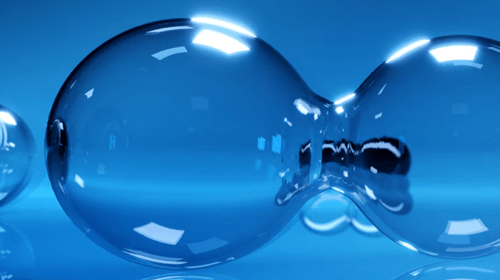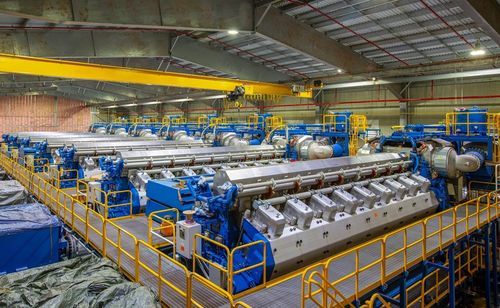Upper Midwest utility WEC Energy Group and the Electric Power Research Institute (EPRI) successfully demonstrated the blending of hydrogen in a natural gas generator.
The project is the first hydrogen power test of a utility-scale, grid-connected reciprocating engine generator in the world, according to a press release earlier this month.
During two weeks of testing in mid-October, hydrogen and natural gas were tested in blends up to 25/75 percent by volume to power one of the reciprocating engine generating units that serves customers of Upper Michigan Energy Resources, a WEC Energy Group subsidiary.
The testing was performed on an 18 MW unit that uses a technology known as RICE — reciprocating internal combustion engines. The RICE unit was continually monitored during the test to measure performance, output and emissions data.
“We’re very pleased to take a leading role exploring the potential of this technology as we focus on providing customers with affordable, reliable and clean energy,” said Gale Klappa, executive chairman — WEC Energy Group. “As we bring more renewable energy online, we must ensure that we can keep the lights on when the sun is not shining and the wind is not blowing. The results of this project are a strong indicator that these dispatchable units can run on very low- and no-carbon fuels.”
“Demonstration projects like this one are critical to advancing clean energy technologies needed to meet net-zero goals,” said EPRI President and CEO Arshad Mansoor. “This project will provide key insights on how this could be replicated around the world, providing energy companies with a suite of solutions to reduce carbon emissions. We look forward to working with WEC Energy Group and other energy stakeholders throughout the clean energy transition.”
WEC Energy Group has set some of the most aggressive environmental goals in the energy industry, including net-zero carbon emissions from electric generation by 2050 and net-zero methane emissions from natural gas distribution by the end of 2030.
WEC Energy Group and EPRI worked with numerous industry groups on the project, including Wärtsilä, Burns and McDonnell, and Certarus. The project would not have been possible without the cooperation and support of Cleveland-Cliffs, the primary user of the power generated by the test unit.
EPRI will share a complete analysis of the project in early 2023 to further inform the energy industry on ways to successfully use hydrogen for RICE power generation to support reducing carbon emissions.





